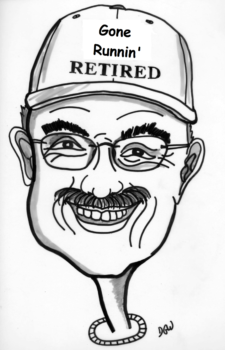What is a man? What is a woman? What is a boy? What is a girl?
We all have preconceived ideas and stereotypes that define these words.
If you ask a six-year-old male, “what is a girl?” After saying, “yuck,” he may say, “they like pink, wear dresses, have long hair, and play with dolls.” Isn’t that the stereotype that we were taught growing up? So. if that six-year-old male says he wants to be a girl, does he mean he wants to do things girls do or do changes to his body?
Does Hollywood develop their products based on stereotypes, or are they creating the stereotypes?
The Beatles introduced long-haired men on the Ed Sullivan show to the United States. Before that, white men were portrayed as clean-cut, clean-shaven, strong heroes. The fathers were intelligent and wise, especially those living in the northern suburbs.
Also, in the sixties, the Beverly Hillbillies, Green Acres, Andy Griffith, Hee Haw, Gomer Pyle, and Petticoat Junction portrayed southern men as slow of mind, unteachable unsophisticated. Some were wise to help direct the typical hick friend. After six years in California, Jethro Bodine and Ellie Mae Clampett could not learn the ways outside of the Ozarks. Was Hollywood trying to open a new demographic or poke fun at a large part of our population?
Through the sixties, Hollywood portrayed women as stay-at-home, weak, long-haired, dress-wearing people that needed to marry to survive. They had, on exception, a strong-willed woman.
The moviemakers sometimes placed references to Native American tribes in the wrong section of the country and wore ceremonial headdresses into battle. Regardless, there was the Indian stereotype of unintelligent, killer, and thief. In Westerns, made before 1980, the typical Indian scene was a significant scale attack, riding around in circles or the sneaky silent assault. Except for Tonto, Indians approached only to kill. Most Indian women were portrayed as slaves. Note: my grammar checking program recommends changing the word “slaves” to “enslaved people” for sensitivity.
Asia immigrants were industrious and ran the laundry. A hateful bully usually cut off the Chinese man’s queue.
Mexican’s were drunken bandits.
Only a few roles for black actors were not maids, butlers, and servants. Within the 271 episodes of Perry Mason, Ivan Dixon was the only black actor in a significant role. He was the cutting-edge surprise witness as the not long-lost offspring exchanged at an orphanage.
Through early Hollywood, white European people filled ninety-five percent of the roles.
In the early seventies, things started changing, with Norman Lear leading the way. Archie and Edith Bunker continued the familiar stereotype with Gloria and Mike Stevic starting a new image of men and women. Their appearance, attitudes, and empowerment changed. Though different, stereotypes continued.
Currently, married men are unworthy boobs. If a man has good tastes or a woman does manual construction labor, their sexual preference must be gay. Hollywood is breaking old stereotypes and, in the process, has created new stereotypes.
As I’ve aged, I try not to judge those I do not know by their appearance. It’s better if we can, but we all start with our experiences and prejudices. Hopefully, we don’t act out and try to destroy those who are different.
So in future posts, understand we have personal stereotypes. And others, fake news, try to push stereotypes on us.
More in Part 3.
